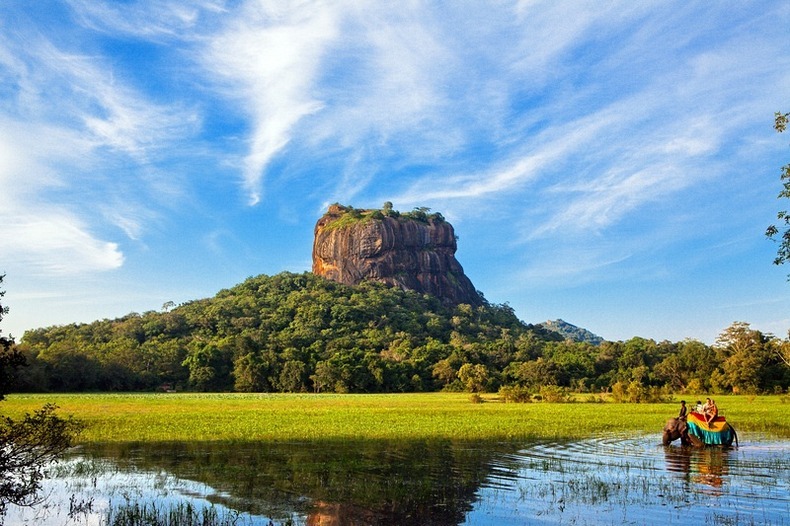
Originally called Sihagiri (Remembrance Rock) and later dubbed Sigiriya (Lion Rock), the rock mass is actually the hardened magma plug of an extinct volcano that long ago eroded away. Pocked with natural cave shelters and rock overhangs – supplemented over the centuries by numerous hand-hewn additions and modifications – the rock may have been inhabited in prehistoric times.
Popular myth says that the formation served royal and military functions during the reign of King Kassapa (AD 477–495), who allegedly built a garden and palace on the summit. According to this theory, King Kassapa sought out an unassailable new residence after overthrowing and murdering his own father, King Dhatusena of Anuradhapura.
A new theory, supported by archaeological, literary, religious and cultural evidence rather than local legend, says that Sigiriya was never a fortress or palace, but rather a long-standing Mahayana and Theravada Buddhist monastery built several centuries before the time of King Kassapa. Monks were using it as a mountain hermitage by the 3rd century BC, and there is abundant evidence to show it had become an important monastery by the 10th century AD. According to Sigiriya and its Significance: A Mahayana-Theravada Buddhist Monastery, by Dr Raja De Silva, Sri Lanka’s former archaeological commissioner, the ancient site’s much treasured frescoes of buxom women were not portraying ladies from Kassapa’s court, as was popularly believed. Instead, they were intended to represent Tara Devi, an important Mahayana Buddhist goddess.
After the 14th century, the monastery complex was abandoned. British archaeologist HCP Bell discovered the ruins in 1898, which were further excavated by British explorer John Still in 1907. Whatever exact purposes Sigiriya may have served in the past, the visible ruins today suggest a significant urban site complete with relatively sophisticated architecture, engineering, urban planning, hydraulic technology, gardening and art. Unesco declared Sigiriya a World Heritage Site in 1982.

